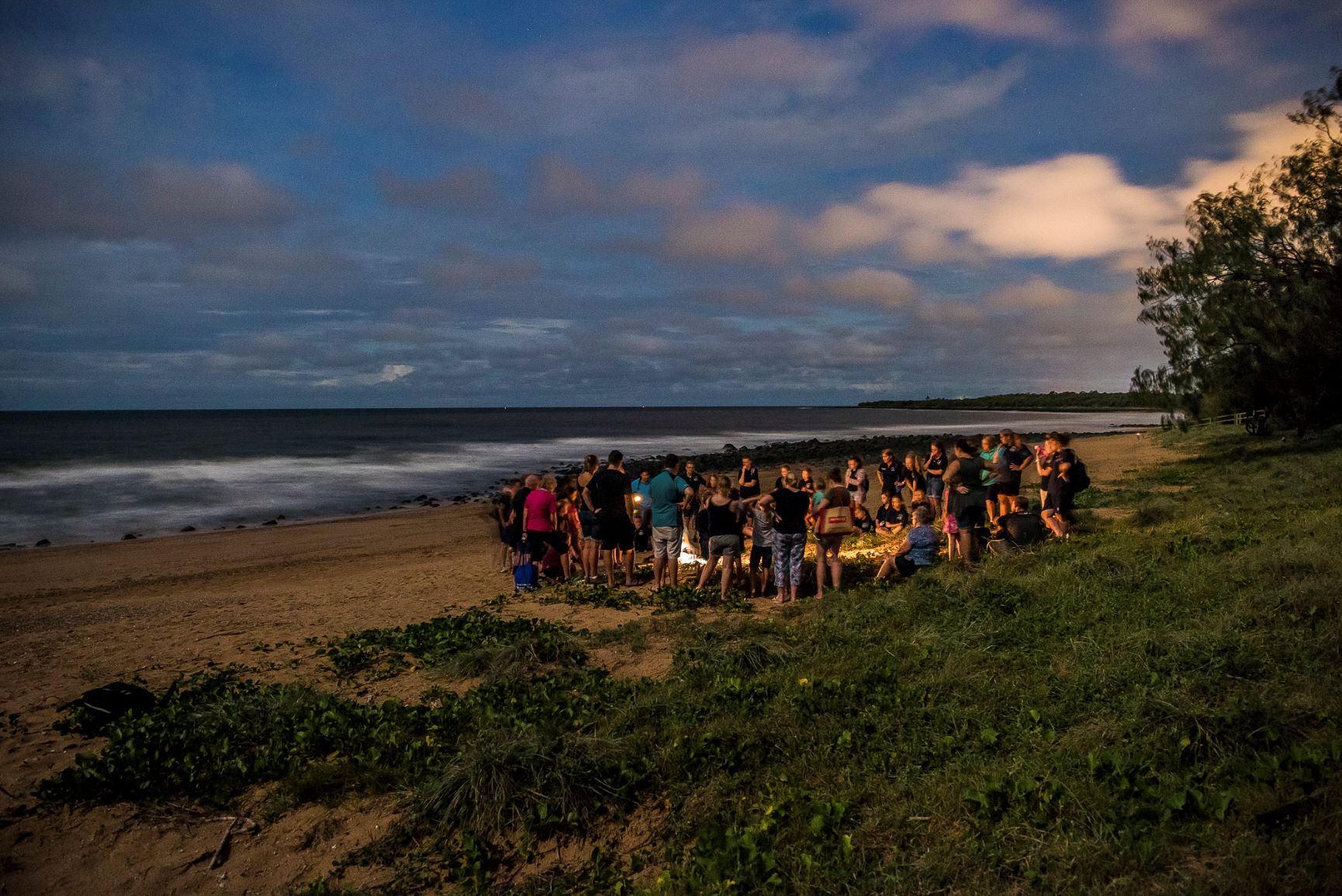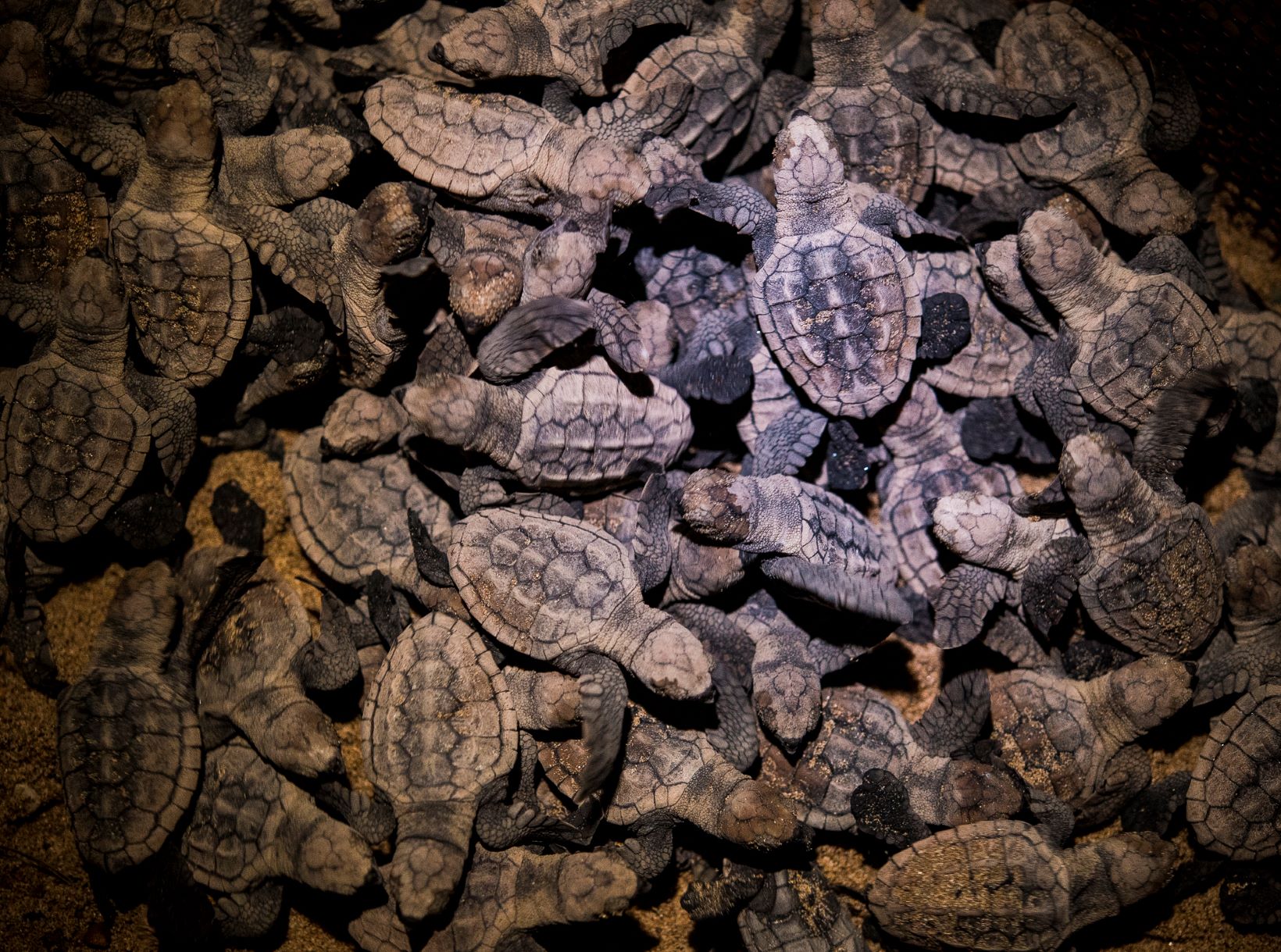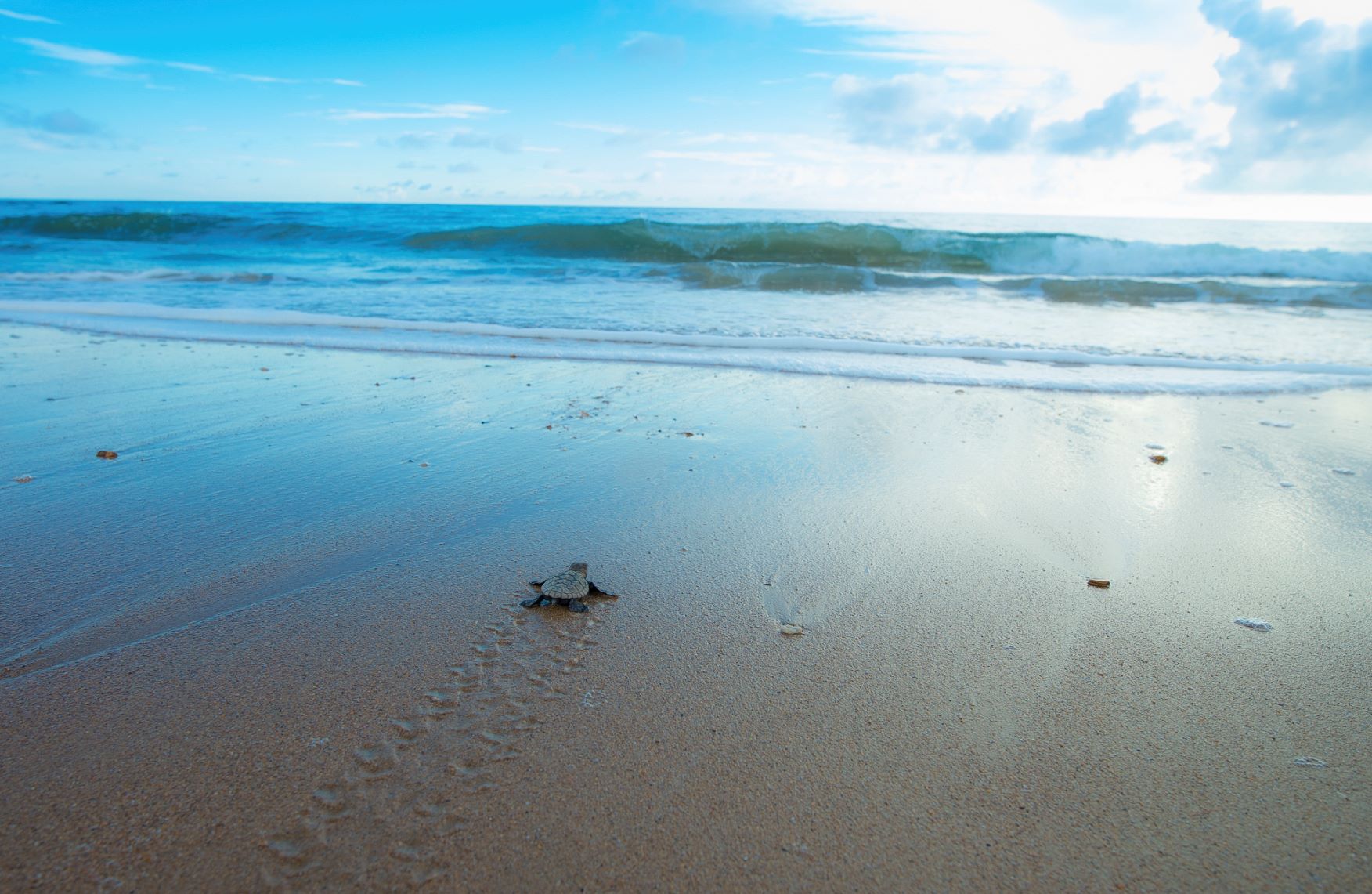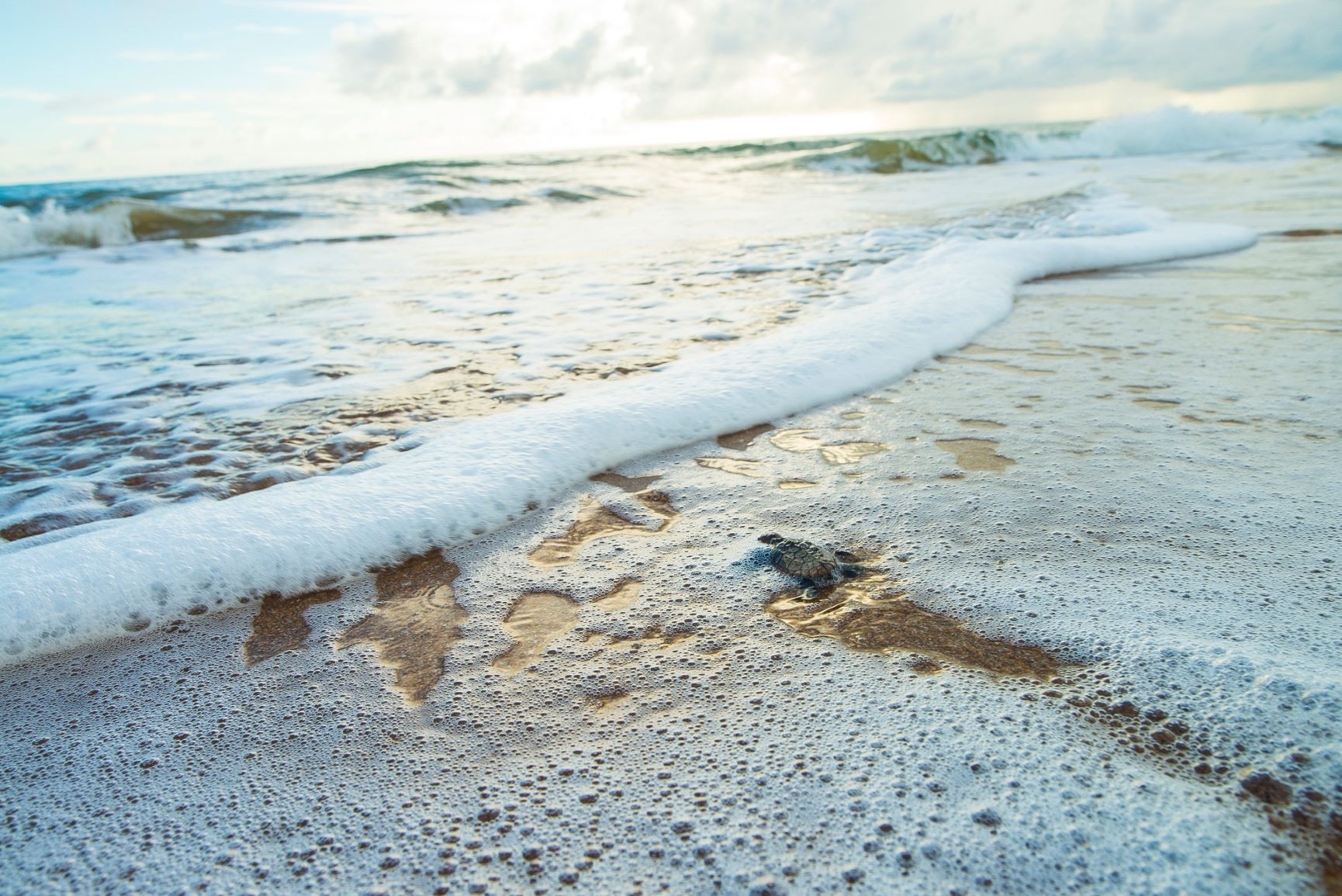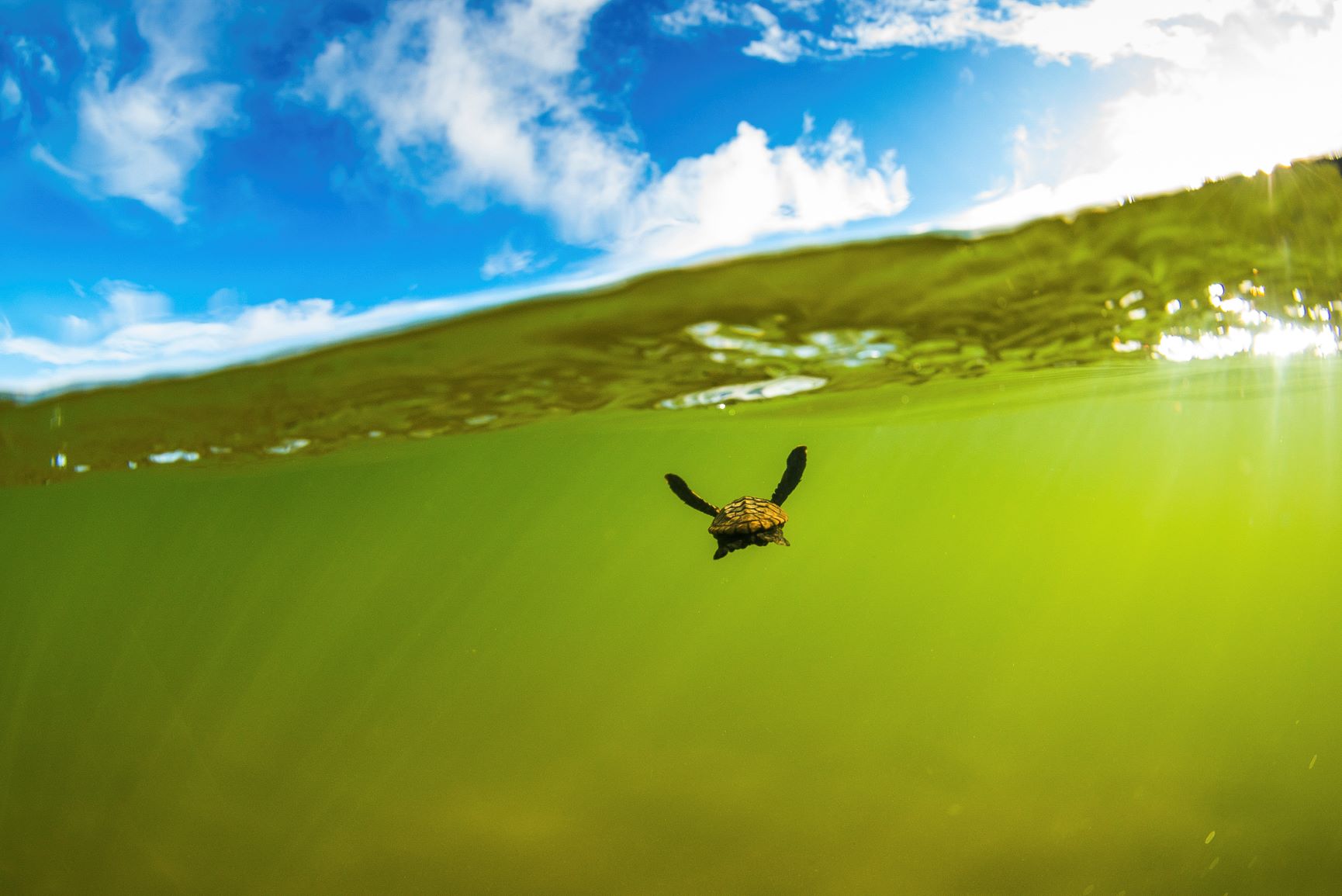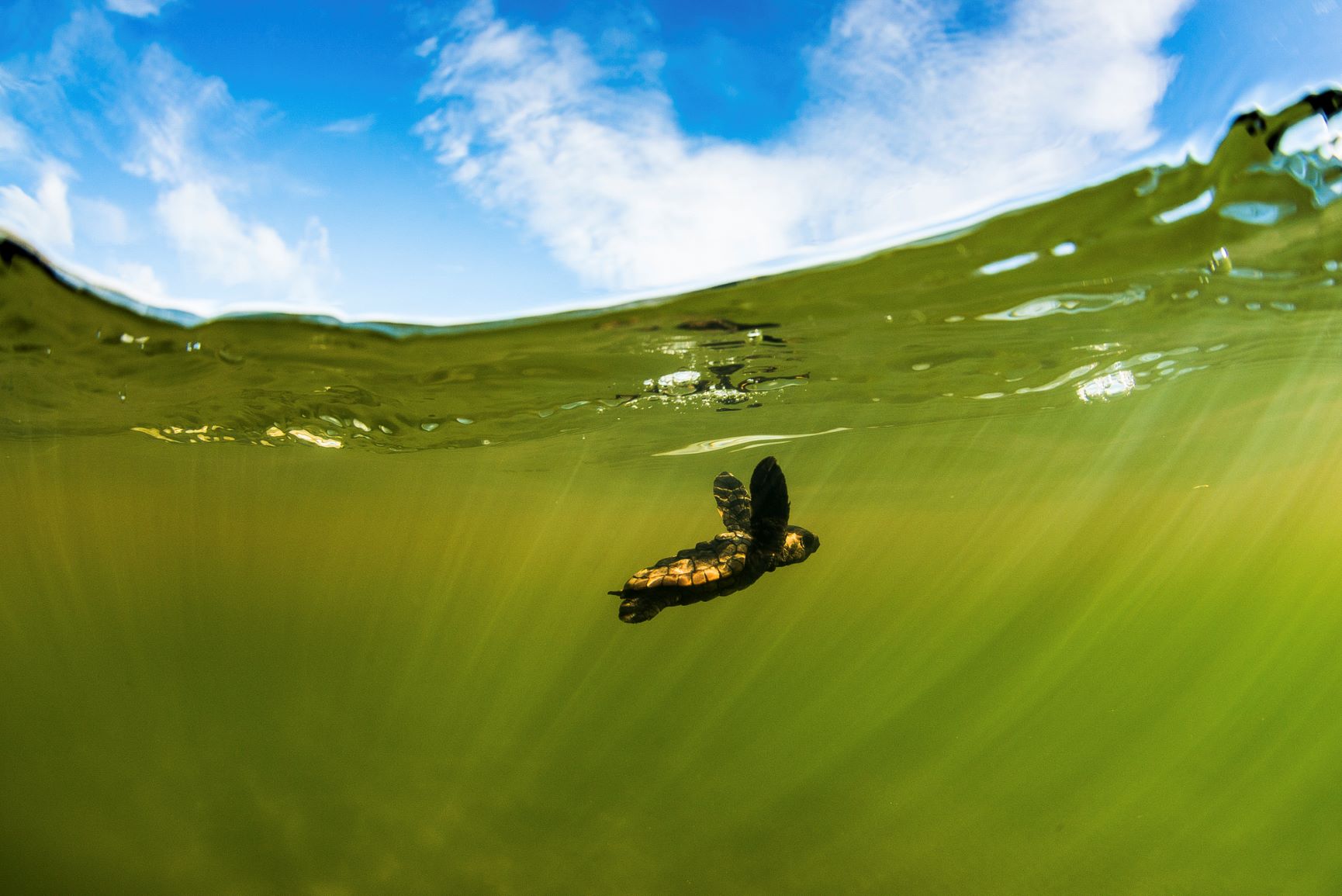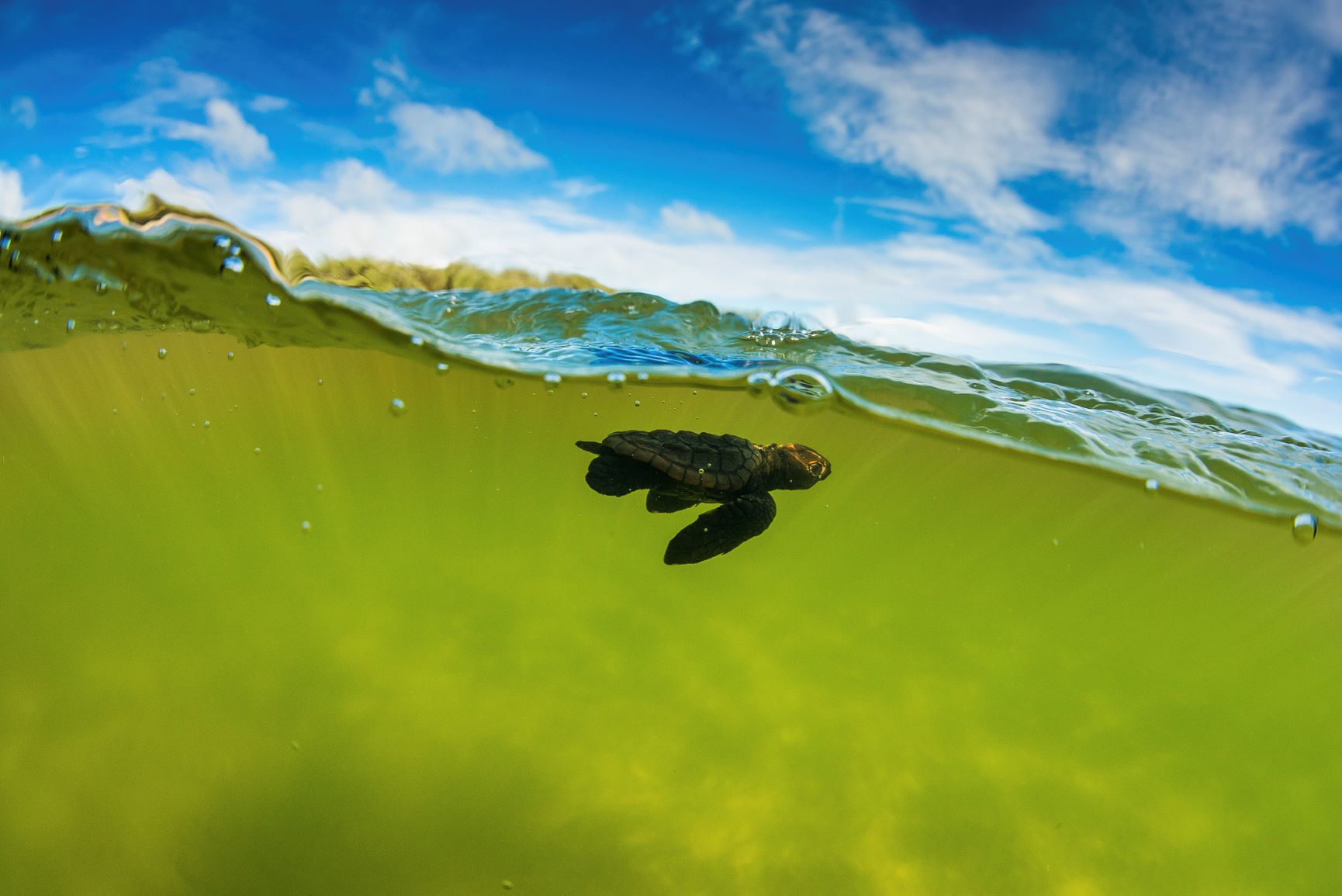Documenting the journey of the loggerhead turtle hatchlings
Queensland Museum photographer Gary Cranitch has shared some of his favourite photos from a trip to Mon Repos to document the journey of the loggerhead turtle hatchlings.
Mon Repos is a globally-significant site that supports the largest concentration of nesting marine turtles on the eastern Australian mainland and the most significant loggerhead turtle nesting population in the South Pacific region.
The success of the loggerhead nesting and hatching turtles at Mon Repos is critical for the survival of this endangered species.
Loggerhead turtles (Caretta caretta) are a large turtle with a broad triangular head and powerful crushing jaws. The shell is heart-shaped with five large scales down either side. They are reddish brown.
A loggerhead turtle will lay around 125 ping-pong ball sized eggs per clutch and nesting occurs in late November to late January. From January to late March, the eggs hatch and visitors to Mon Repos have the opportunity to catch a glimpse through guided tours through the Mon Repos Turtle Centre.
The hatchlings from Queensland will disperse as far as South America and spend around 16 years at sea, before returning to the south-west Pacific.
Each year visitors to Queensland Museum during World Science Festival Brisbane, can witness loggerhead turtles hatching as part of The Hatchery. The Hatchery is designed by Queensland Museum’s reptile curator Patrick Couper in collaboration with internationally renowned herpetologist Dr Colin Limpus.
For more information about The Hatchery visit www.worldsciencefestival.com.au and for more information about Mon Repos Turtle Centre visit https://environment.des.qld.gov.au/
For more facts about loggerhead turtles click here.
Information about loggerhead turtles was sourced from Queensland Museum and Department of Environment and Science.



